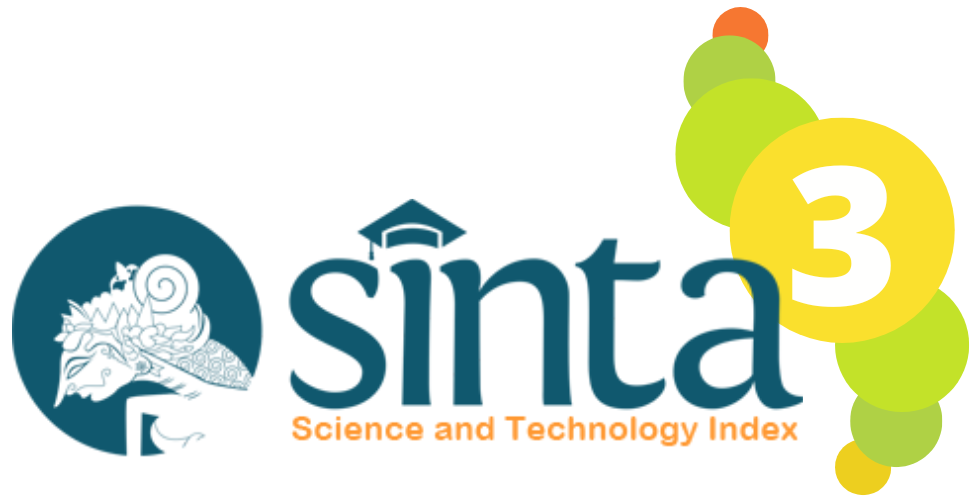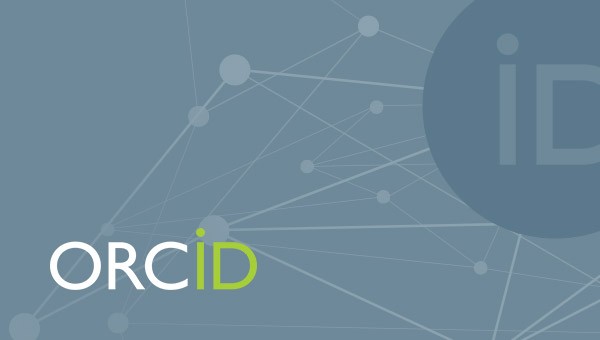Geothermal Lithology Identification in Air Putih, Lebong, Bengkulu Using Magnetotelluric (MT) Method
DOI:
10.29303/jpft.v11i1.8417Published:
2025-03-18Issue:
Vol. 11 No. 1 (2025): January-JuneKeywords:
Lithology, Magnetotelluric, Air Putih, Lebong RegencyArticles
Downloads
How to Cite
Downloads
Metrics
Abstract
Lebong is one of the areas located in Bengkulu Province and is passed by the Ketaun Segment fault. The fault causes several locations in Lebong to have manifestations such as hot springs, solfatara, and fumarole. This research aims to identify rock lithology with 2D modeling using the magnetotelluric method. The data acquisition process was carried out using a magnetotelluric device with a low frequency of 128 Hz, a medium frequency of 1024 Hz, and a high frequency of 4096 Hz. The sensor in the recording consists of two sensors, namely electric and magnetic. Based on the field survey, the results obtained are several distributions of resistivity values from low, medium, and high. The acquired data was processed using ZONDMT software to obtain 2D modeling. The results of data processing interpret the resistivity value to depth. There are 8 measuring points in one track with a west-southeast direction. Variations in measured resistivity consist of low, medium, and high resistivity. The distribution of low resistivity values (10-25 Ωm) in this area is identified as the response of the caprock, having a depth of <1.5 km, shown in light blue. The distribution of medium resistivity values (40-150 Ωm) shown in green to yellow is identified as a reservoir zone with a depth of >1.8 km. Rocks with high resistivity values (>300 Ωm) shown in red are identified as hot rock zones. Hot rocks are at a depth of 4-6 km. The range of frequency values on the 2D modeling color scale ranges from 1-800 Ωm. The results of this study can be used as a basis for feasibility studies for local governments to develop geothermal energy projects. By knowing the subsurface characteristics, the potential for geothermal energy reserves in Lebong can be evaluated more accurately.
References
Al Ansory, Andre Rahmat, Hana Raihana, Vinki Loverly Pritama, Welly Saputri, Faritz Bagda Maghribi, Muchammad Farid, Arif Ismul Hadi, Halauddin, Budi Harlianto, and Nanang Sugianto. (2023). Delineasi Nilai Resistivitas Di Lapangan Panas Bumi Tambang Sawah Menggunakan Metode Magnetotellurik. Buletin Sumber Daya Geologi 18(3), 145–54. doi: 10.47599/bsdg.v18i3.386. DOI: https://doi.org/10.47599/bsdg.v18i3.386
Atimi, MT., Rizqia Lestika, and Sartika Sartika. (2022). Implementasi Forward Chaining Method Untuk Analisis Klasifikasi Mineralogi Batuan Beku. Jurnal Edukasi Dan Penelitian Informatika (JEPIN) 8(1), 80. doi: 10.26418/jp.v8i1.52374. DOI: https://doi.org/10.26418/jp.v8i1.52374
Bahri, Samsul, and Aditya Ramadhan. 2022. “Pemodelan Pola Aliran Fluida 2D Di Area Panas Bumi Menggunakan Metode Elemen Hingga Pendekatan Galerkin.” Cgant Journal of Mathematics and Applications 3(2):34–41. doi: 10.25037/cgantjma.v3i2.81. DOI: https://doi.org/10.25037/cgantjma.v3i2.81
Dewi, Cinantya Nirmala, Sukir Maryanto, and Arief Rachmansyah. (2015). Sistem Panasbumi Daerah Blawan, Jawa Timur Berdasarkan Survei Magnetotelurik. Jurnal RISET Geologi Dan Pertambangan. 25(2), 111. doi: 10.14203/risetgeotam2015.v25.262 DOI: https://doi.org/10.14203/risetgeotam2015.v25.262
Dezayes, Chrystel, Vincent Famin, Bruno Tourlière, Jean Michel Baltassat, and Bhavani Bénard. (2022). Potential Areas of Interest for the Development of Geothermal Energy in La Réunion Island Based on GIS Analysis. Journal of Volcanology and Geothermal Research. 421, 1–13. doi: 10.1016/j.jvolgeores.2021.107450. DOI: https://doi.org/10.1016/j.jvolgeores.2021.107450
Harahap, Zelya Agitha, Agus Didit Haryanto, Yusi Firmansyah, and Muhammad Kurniawan Alfadli. (2022). Determinasi Zona Reservoir Dengan Data Magnetotelurik Di Zona Prospek Panas Bumi Telaga Ngebel, Jawa Timur. Padjadjaran Geoscience. 6(2), 803–11.
Hoerunisa, Anis-, and Sismanto Sismanto. (2020). Interpretasi Anomali Data Gravitasi Daerah Panas Bumi ‘K51S’ Berdasarkan Pemodelan 3D. Jurnal Fisika Indonesia. 24(3), 136–40. doi: 10.22146/jfi.v24i3.56789. DOI: https://doi.org/10.22146/jfi.v24i3.56789
Irawati, Selvi Misnia, Andri Yadi Paembonan, and Leonardo Fernanda. (2024). Aplikasi Tensor Fase Data Magnetotellurik Untuk Pemodelan Panas Bumi The Geysers, California Dan Dikorelasikan Dengan Data Gaya Berat. Jurnal Geosains Dan Teknologi. 6(3), 186–202. doi: 10.14710/jgt.6.3.2023.186-202. DOI: https://doi.org/10.14710/jgt.6.3.2023.186-202
Joel, Piameu Kwagag, Owona Angue Marie Louise-Clotilde, Ngatchou Evariste, Njingti Nfor, Kue Petou Rokis Malquaire, and Njandjock Nouck Philippe. (2022). Identification of Geothermal Reservoirs in South Cameroon from a Combined Landsat 8 and AMT Data. International Journal of Geophysics. 1–17. doi: 10.1155/2022/1324766. DOI: https://doi.org/10.1155/2022/1324766
Maryanto, Sukir, Cinantya N. Dewi, Vanisa Syahra, Arief Rachmansyah, James H. Foster, Ahmad Nadhir, and Didik R. Santoso. (2017). Magnetotelluric-Geochemistry Investigations of Blawan Geothermal Field, East Java, Indonesia. Geosciences (Switzerland). 7(2), 1–13. doi: 10.3390/geosciences7020041. DOI: https://doi.org/10.3390/geosciences7020041
Mulyani, Sri, Yunus Daud, Riza G. Pasiki, and Haris Siagian. (2022). Karakterisasi Struktur Patahan Pada Lapangan Panas Bumi X (Sumatra) Berdasarkan Pemetaan Geologi, Penginderaan Jauh, Dan Data Gaya Berat. Buletin Sumber Daya Geologi. 17(2), 109–24. doi: 10.47599/bsdg.v17i2.327. DOI: https://doi.org/10.47599/bsdg.v17i2.327
Oktarina, Mia., Edy Sutriyono. (2022). Journal of Geology. Journal of Geology Sriwijaya. 2, 69–77.
Oktarina, Mia, Rizky Tanjung, M, and Nadika Devatama. (2021). PENENTUAN DAERAH TERDAMPAK LONGSOR DI. Teknik Geologi: Ilmu Pengetahuan Dan Teknologi. 4(2), 1–6. DOI: https://doi.org/10.30872/jtgeo.v4i2.5453
Omollo, Philip, Jun Nishijima, Yasuhiro Fujimitsu, and Kazuki Sawayama. (2022). Resistivity Structural Imaging Of The Olkaria Domes Geothermal Field in Kenya Using 2D and 3D MT Data Inversion. Elsevier. 1–33. DOI: https://doi.org/10.1016/j.geothermics.2022.102414
Paais, Chealsya, Didit Haryanto, A, J. Hutabarat, and Dewi Gentana. (2021). GEOKIMIA AIR PANAS DAN PENDUGAAN TEMPERATUR BAWAH PERMUKAN PADA POTENSI PANAS BUMI DAERAH TAWIRI, KECAMATAN TELUK AMBON,KOTAAMBON,PROVINSI MALUKU. Padjajaran Geoscience Journal. 5, 138–49.
Pahri, A. Yadi Paembonan, and Selvi M. Irawati. (2023). Analisis Tensor Fase Dan Pemodelan 2D Data Magnetotelurik Gabbs Valley,Nevada,USA. Jurnal Geofisika Eksplorasi. 09(03), 206–16. DOI: https://doi.org/10.23960/jge.v9i3.301
Pratama, Rikaldo, Ichy Lucya Resta, Faizar Farid, and Wiwid Joni. (2021). Identifikasi Lapisan Bawah Permukaan Daerah Prospek Panas Bumi Songa-Wayaua Berdasarkan Metode Magnetotelurik. Jurnal Meteorologi Dan Geofisika. 22(2), 45–53. doi: 10.31172/jmg.v22i2.786. DOI: https://doi.org/10.31172/jmg.v22i2.786
Purwanto, Eko Heru Putih, Andre Rahmat Al Ansory, U. Gumanty, D. Wulandari, Refrizon, Halaudin, N. Sugianto, Arif H. Hadi, Farid M, Suhendra, Budi Harlianto, Shela B. Purba, and R. Zamrawi. (2024). Pemodelan Lapisan Batuan Bawah Permukaan Kawasan Panas Bumi Menggunakan Metode Geomagnetik. Wahana Fisika. 9(1), 47–58. DOI: https://doi.org/10.17509/wafi.v9i1.69878
Reynolds, M. Jhon. (1997). An Introduction to Applied and Environtmental Geophysics.
Salam, Riznia Aji, and Udi Harmoko. (2017). Pemodelan 2D Sistem Pana Bumi Daerah Garut Bagian Timur Menggunakan Metode Magnetotelurik. Youngster Physics Journal. 6(2), 143–50. DOI: https://doi.org/10.17977/um024v2i22017p072
Sapulete, Sisca M., Matheus Souisa, and Sitti Jubaedah. (2019). Interpretasi Data Resistivitas Untuk Mengidentifikasi Munculnya Longsor Susulan Di Blok V Wayame Ambon. BAREKENG: Jurnal Ilmu Matematika Dan Terapan. 13(3), 185–96. doi: 10.30598/barekengvol13iss3pp185-196ar926. DOI: https://doi.org/10.30598/barekengvol13iss3pp185-196ar926
Simpson, Fiona, and Karsten Bahr. (2005). Practical Magnetotellurics. Vol. 9780521817. DOI: https://doi.org/10.1017/CBO9780511614095
Siregar, Ahmat Munawir, Ira Kusuma Dewi, and Ngatijo Ngatijo. (2021). Identifikasi Batuan Granit Daerah Prospek Panas Bumi Nyelanding Menggunakan Metode Magnetik. Science, and Physics Education Journal (SPEJ). 4(2), 62–69. doi: 10.31539/spej.v4i2.2388. DOI: https://doi.org/10.31539/spej.v4i2.2388
Siripunvaraporn, W., and G. Egbert. (2000). An Efficient Data-Subspace Inversion Method for 2-D Magnetotelluric Data. Geophysics. 65(3), 791–803. doi: 10.1190/1.1444778. DOI: https://doi.org/10.1190/1.1444778
Telford, W. M., L. P. Geldart, and R. E. Sheriff. (1990). Magnetic Methods.
Wannamaker, Philip E. (2005). Anisotropy versus Heterogeneity in Continental Solid Earth Electromagnetic Studies: Fundamental Response Characteristics and Implications for Physicochemical State. Vol. 26. DOI: https://doi.org/10.1007/s10712-005-1832-1
Wulandari jasmine christian, Gaffar z. Eddy, zulaikah siti, P. Nugroh. Adi. (2017). Penentuan Struktur Litologi Daerah Panas Bumi Probolinggo Menggunakan Metode Magnetotelurik (MT). 1–6.
Author Biographies
Della Zakia Sholeha, University of Bengkulu
Geophysics Study Program
Muchammad Farid, University Bengkulu
Geophysics Study Program
Refrizon Refrizon, University of Bengkulu
Geophysis Study Program
License
Copyright (c) 2025 Della Zakia Sholeha, Muchammad Farid, Refrizon Refrizon

This work is licensed under a Creative Commons Attribution-ShareAlike 4.0 International License.
Authors who publish with Jurnal Pendidikan Fisika dan Teknologi (JPFT) agree to the following terms:
- Authors retain copyright and grant the journal right of first publication with the work simultaneously licensed under a Creative Commons Attribution License 4.0 International License (CC-BY-SA License). This license allows authors to use all articles, data sets, graphics, and appendices in data mining applications, search engines, web sites, blogs, and other platforms by providing an appropriate reference. The journal allows the author(s) to hold the copyright without restrictions and will retain publishing rights without restrictions.
- Authors are able to enter into separate, additional contractual arrangements for the non-exclusive distribution of the journal's published version of the work (e.g., post it to an institutional repository or publish it in a book), with an acknowledgement of its initial publication in Jurnal Pendidikan Fisika dan Teknologi (JPFT).
- Authors are permitted and encouraged to post their work online (e.g., in institutional repositories or on their website) prior to and during the submission process, as it can lead to productive exchanges, as well as earlier and greater citation of published work (See The Effect of Open Access).










